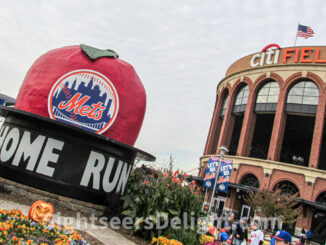It was a ground ball “trickling” down the first base line. It trickled past first baseman Bill Buckner and into the history books.
Minutes before, everyone knew the New York Mets’ season was over. Down two runs in the bottom of the 10th inning with two outs, Gary Carter stood at the plate with a strike on him. Even the crew at Shea Stadium knew the game was over, as a message of congratulations to the Boston Red Sox flashed on the scoreboard.
A single from Carter. Then, one from Kevin Mitchell. Next, Ray Knight followed with another – a hit that scored Carter and cut the lead to one.
Today marks the 20-year anniversary of one of the most famous at-bats in World Series history.
Mookie Wilson stepped into the box to square off against pitcher Bob Stanley.
“What happened next was compelled, created, by Mookie’s cleverness and speed – a hitless at-bat that had wizardry in it,” Carter wrote in his 1987 memoir, “A Dream Season.”
Stanley threw a pitch inside.
Wilson “jackknifed out of the way,” Carter recalled. The pitch escaped catcher Rich Gedman, Mitchell scored from third base. Somehow, the Mets had tied the game at 5 (In all fairness, the pitch could just as easily be considered a passed ball).
“When I get to home plate, we were down by a run and I’m up there to, for a lack of a better term, save face,” Wilson was quoted as saying in Mike Sowell’s 1995 book “One Pitch Away.” “I just don’t want to embarrass myself. I’m up there to make contact.”
What happened next is seared into the memories of baseball fans. Wilson hit a slow ground ball toward the aging Buckner. The first baseman reached down to make a routine play that ended up anything but routine. The next thing anyone knew, the ball was in right field and Knight was crossing home plate. The Mets had won, 6-5. They completed one of the most improbable comebacks in baseball history. It was a comeback of legendary proportions.
The comeback was made possible by Buckner’s error.
Or was it?
Perhaps, the credit should go to Wilson, who avoided being hit by Stanley’s pitch.
“Now think about it: If the pitch had hit Mookie, he would have gone to first, a meaningless runner, Ray being the winner,” Carter wrote. “The pitch was sailing; Mookie had to know it might get away from Gedman. Dodging that ball was crucial.”
If the pitch hit Wilson, it would have been Howard Johnson stepping up to the plate with the bases loaded, two outs and his team down a run. That never happened.
Think long and hard about Carter’s point. Maybe we shouldn’t instantly think, “Buckner’s error” when someone says “1986 World Series.” Maybe, we should think, “Stanley’s wild pitch.”
In the years since the 1986 World Series, Dave Stapleton often said he should have been sent in as a defensive sub for Buckner. Maybe he would have fielded Wilson’s grounder cleanly and made the third out. Either way, Stapleton wouldn’t have stopped Stanley’s wild pitch.
Who knows what would have happened in the 11th inning?




